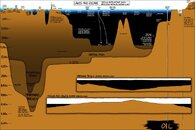an egg can do better than that. I know its not the same...
According to the math on this site (which is based off research by Wood's Hole OI), an AL80 made out of 6061 aluminum, with a wall thickness of .521" and an OD of 7.25" should yield at about 3500 meters and buckle at about 5750 meters.This, of course, assuming that by "sealing", you mean that the neck is plugged using a method that's at least as strong as the rest of the tank. A scuba valve should fail long before the cylinder itself does at extreme depths.Call up Jamie and Adam, and let's start a new thread... "I'd like to see a scuba tank explode... UNDERWATER." =)




